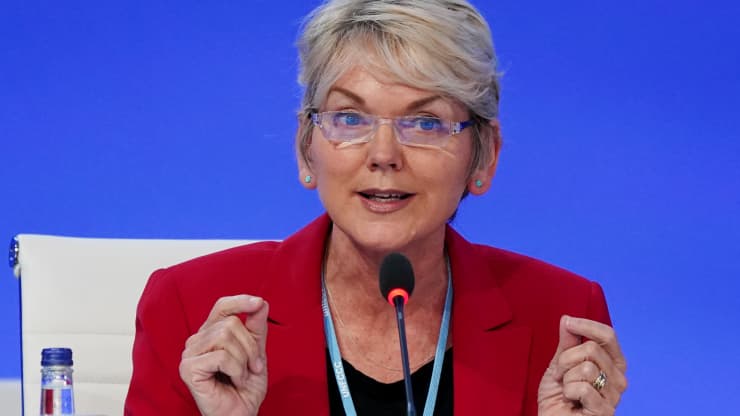
With oil prices recently hitting the highest level since 2008, Secretary of Energy Jennifer Granholm took to the stage in front of a room full of energy executives with a simple message: raise output.
“We are in an emergency, and we have to responsibly increase short-term supply where we can right now to stabilize the market and minimize harm to American families,” she said Wednesday at CERAWeek by S&P Global.
The U.S. has tapped the Strategic Petroleum Reserve twice in recent months — last week and in November — and Granholm said a third release is not off the table.
But she also called on the private sector — and Wall Street — to play a role at this pivotal time.
“I hope your investors are saying these words to you as well: In this moment of crisis, we need more supply … right now, we need oil and gas production to rise to meet current demand,” she said.
Oil and gas companies have fundamentally shifted their business models in the wake of the pandemic. While once it was about growth at all costs, capital discipline now reigns supreme. Companies are paying down debt, announcing share buybacks and hiking dividends. Along with those measures, they’ve pledged to keep supply in check.
In her appeal to an industry that has felt alienated by the administration, Granholm said the Department of Energy and the Biden administration broadly are ready to work with producers.
She said that increasing output now doesn’t detract from the White House’s longer-term clean energy goals, declaring “we can walk and chew gum at the same time” in reference to pursuing both fossil fuel and renewable energy pathways.
The oil and gas industry has said the White House is holding back drilling with unfriendly policies. Officials have dismissed these claims.
The industry also is struggling with the same supply chain issues that are reverberating throughout the broad economy. Occidental Petroleum CEO Vicki Hollub said Tuesday that it’s difficult to find raw materials like sand and that the labor market remains tight. Hollub also stressed that output can’t just be raised on a dime. While the industry had prepared for supply chain bottlenecks, it had not prepared for a sudden call to raise production, she said.
Oil prices topped $130 per barrel on Sunday, the highest level since 2008. Less than two years ago, West Texas Intermediate, the U.S. oil benchmark, traded below zero.
Since then, demand has recovered while producers have scaled back, keeping supply in check. Years of underinvestment also is adding to a tight market and Russia’s invasion of Ukraine sent crude surging given the fundamental backdrop: rising demand with supply struggling to keep pace.
Granholm urged the government and the industry to work together as they have for over 100 years — this time helping to move toward clean energy alternatives.
“It’s hard to see history in the making when you’re right in the middle of it. I think that we are on the cusp of the most important transition that human society’s ever seen,” she said.





























